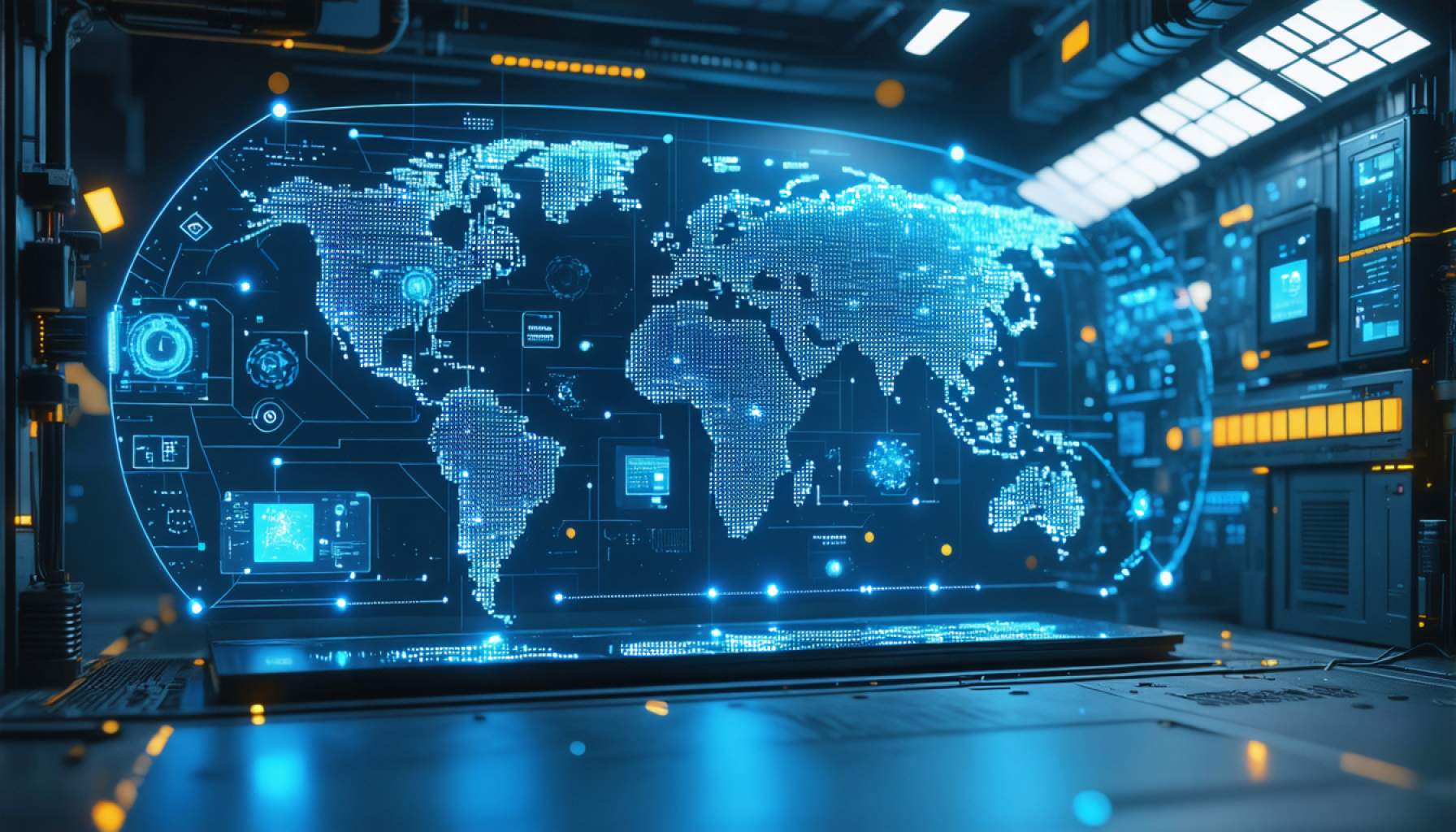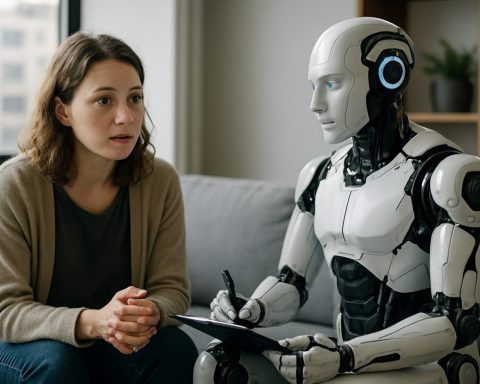- The synergy between artificial intelligence (AI) and blockchain technology is reshaping the digital landscape, shifting from competition to collaboration.
- Blockchain provides a robust infrastructure for AI, overcoming challenges like cumbersome user experiences and transaction inefficiencies.
- AI enhances blockchain by optimizing transactions through constant, tireless scheduling and navigating complex fee structures.
- Smart contracts facilitate autonomous, ethical transactions, enabling AI to operate independently in decentralized environments.
- The anticipated rise of a machine economy involves AI and blockchain working symbiotically to handle complex tasks and transactions autonomously.
- Early adopters are leveraging this integration for enhanced DeFi trading, smart-contract audits, and transparent supply chains.
- To fully realize the potential, the blockchain community must implement ethical frameworks and governance models to manage AI’s influence responsibly.
- This convergence promises to lower costs, boost efficiency, and expand global access, leading to a transparent and equitable technological landscape.
Artificial intelligence and blockchain technology often find themselves framed as rivals, as if only one can ascend as the technological powerhouse of the future. Yet, such a narrative starkly underestimates the profound synergy seeded at the crossroads of AI and Web3. This is a story not of competition but of collaboration—a dance where AI and blockchain each provide what the other lacks.
Imagine the intricate ballet of the world’s most sophisticated algorithms moving seamlessly through an infrastructure tailor-made for their unique capabilities. Blockchain networks, often chastised for their cumbersome user experience—endless hexadecimal keys, tedious transaction times, and perplexing gas fees—transform into paradisiacal landscapes for autonomous agents. Machines, unlike their human counterparts, thrive in these digital landscapes. The rigid structures of crypto wallets, composed of public-private key pairs, which can confound even the most tech-savvy individuals, are mere strings of data to AI entities, processed effortlessly and without error.
Crypto’s notorious waiting game is rendered null by the patience and efficiency of AI. While humans grow impatient with block times and micro-fees, AI effortlessly schedules transactions and navigates gas fees through constant, tireless optimization. APIs are the language of machines, and for AI, blockchain’s programmatic interaction is a native tongue, one spoken and understood with precision.
Beyond this, blockchain’s inherent architecture serves as an immutable thread weaving AI’s capabilities into a cohesive tapestry. Smart contracts bring to life ethical, automated transactions, allowing AI to enact agreements without the need for trust in a third party. This capability will usher in a new era where AI agents negotiate, transact, and verify autonomously within a decentralized paradigm.
Witnessing these innovations converge, one sees the scaffolding of an impending machine economy—a frontier where devices and algorithms autonomously transact and coordinate at exponential scales. The International Data Corporation predicts upward of $15 trillion in machine-driven transactions annually by 2030, a figure affirming that today’s clunky financial systems are ill-suited for this rapid evolution. Blockchain, with its real-time, programmable capabilities, is poised to function as the backbone for these exchanges, overcoming the inefficiencies of traditional banking structures.
Already manifesting this vision are trailblazers deploying AI within blockchain to enhance DeFi trading, perform smart-contract audits, and guide decentralized organizations. Projects like Fetch.ai, with agents negotiating via crypto tokens, or Morpheus Network, using AI for transparent supply chains, underscore a trend not of divergence but of convergence—where AI fuels blockchain’s aspirations for seamless operability and verifiable transactions.
However, the endgame extends beyond technical symbiosis. To fully harness the potential of this partnership, the blockchain community must prioritize ethical frameworks and governance models that constrain AI’s power without stifling innovation. As these technologies merge, they must evolve with foresight to ensure societal trust, protect personal data, and safeguard competition.
By perceiving AI and Web3 not as competitors but as integrators, we unlock a vision of a machine economy—one that executes mundane tasks so humans can engage in creativity and strategy. This partnership is not just logical; it is necessary, promising to lower costs, enhance efficiency, and broaden global access like never before. As the lines between AI and blockchain blur, society can redefine what it means to engage with technology in a transparent, secure, and equitable landscape. The future isn’t AI versus Web3; it’s AI with Web3, crafting a harmonious future together.
The Unstoppable Fusion of AI and Web3: A Glimpse Into the Future
Exploring the Synergy Between AI and Blockchain Technology
The convergence of artificial intelligence (AI) and blockchain technology is not a clash but a symbiotic relationship that leverages each other’s strengths. This collaboration is set to reshape industries, create new ones, and redefine how we interact with technology.
Key Opportunities and Benefits
1. Automation of Transactions:
AI-driven smart contracts on blockchain platforms can automate a wide range of transactions without the need for human intervention. This is particularly useful in industries like finance and supply chain, where efficiency and accuracy are paramount.
2. Enhanced Security and Trust:
Blockchain provides an immutable ledger, adding a layer of security to AI operations. This ensures that AI processes transpire transparently, enabling audit trails that enhance trust.
3. Real-Time Data Processing:
AI’s ability to process and analyze vast amounts of data in real-time is complemented by blockchain’s secure, decentralized infrastructure, allowing for instantaneous reaction to data insights and thereby improving decisions in DeFi systems.
4. Decentralized Autonomous Organizations (DAOs):
The integration of AI into DAOs allows for effective decision-making processes. AI can sift through large datasets to propose or even enact changes, optimizing operations autonomously.
How-To Steps: Integrating AI with Blockchain
1. Define Objectives:
Identify how AI can enhance your blockchain application. Are you looking at improving transaction efficiency, enhancing data security, or developing new services?
2. Select Suitable Platforms:
Choose blockchain platforms that support smart contracts, such as Ethereum or Solana. Consider AI platforms that can integrate seamlessly with these blockchains.
3. Develop Smart Contracts:
Create smart contracts that incorporate AI algorithms. Use programming languages like Solidity for Ethereum-based networks.
4. Implement and Test:
Deploy the integration in a controlled environment. Test extensively to ensure resilience and functionality.
5. Monitor and Optimize:
Continuously monitor AI behaviors and the blockchain network’s response. Optimize algorithms based on feedback for improved performance.
Industry Trends and Predictions
– Market Growth:
Allied Market Research predicts that the blockchain AI market will grow by $962.5 million by 2027, with applications spanning financial services, healthcare, logistics, and more.
– Data-Centric AI:
As blockchain technology evolves, there will be a focus on ensuring that AI systems access ethically sourced and processed data.
– Edge AI Potential:
The combination of AI with blockchain may lead to increased deployment of edge computing, reducing dependence on cloud services and enhancing decentralization.
Pros and Cons Overview
Pros:
– Enhanced data security and privacy.
– Automation reduces manual errors.
– Real-time analytics improves decision-making.
– Cost-efficient across various sectors.
Cons:
– Scalability challenges on some blockchain networks.
– Regulatory and ethical considerations.
– Initial setup and integration complexity.
Actionable Recommendations
– Stay Informed:
Regularly update on the evolving AI and blockchain landscape to remain competitive.
– Focus on Sustainability:
Prioritize eco-friendly blockchain networks to mitigate the environmental footprint.
– Ethical Integration:
Develop guidelines aligning with global ethical standards to ensure favorable AI deployment.
Conclusion
As we advance into a future defined by the melding of AI and blockchain, it becomes essential to approach their integration strategically. By understanding, adapting, and ethically deploying these technologies, businesses and individuals can leverage their full potential to reshape the economic and social fabric of our lives.
For more insights on technological advancements, visit Technology Review.











